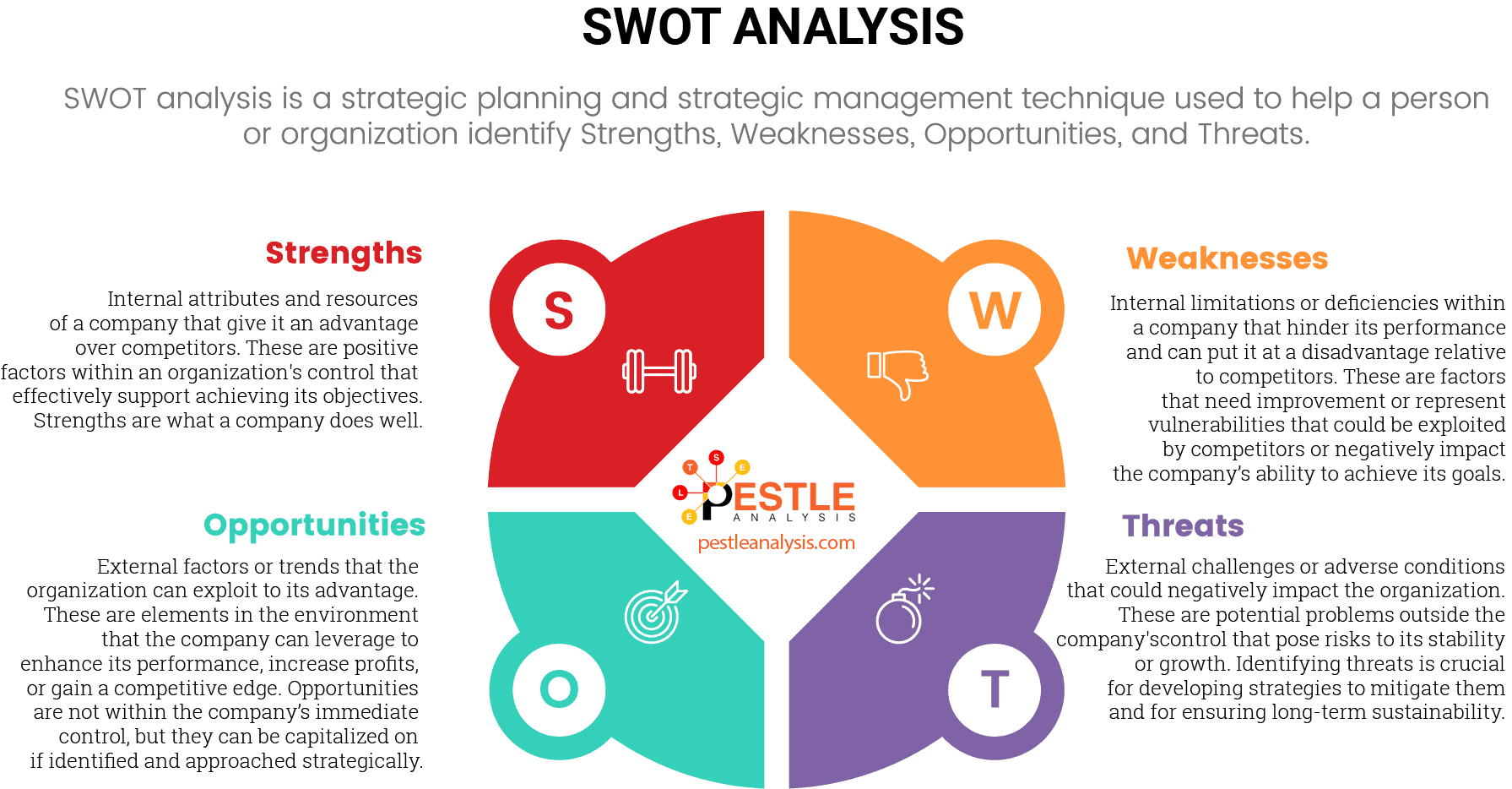Whether you are someone who likes to keep it simple or someone who goes all out with their style and clothes, you all identify with fashion in one way or another. Perhaps that is why this industry has become so big in this era; people express themselves through fashion. In the following SWOT Analysis of the fashion industry, we will analyze why it is such a big deal.

The fashion industry isn’t as old as some of the other ones. The reason for fashion being so “late” to the game is that people in different regions used to have separate cultures and hence separate fashion and clothing choices. With the onset of technological development and globalization, people started connecting with each other.
Soon we saw the advent of ideas and cultures being shared around the world. The western world, particularly Great Britain, had a huge influence because the royal family and their fashion choices were very popular. King Louis the Fifteenth also enjoyed influence over the world with his court’s fashion, thereby making France very prominent as well.
Once people began exchanging ideas, fashion transcended borders and hence the industry boomed. Now, it is a billion-dollar industry with players operating in every country. The SWOT analysis will help us in seeing how this was made possible.
In any SWOT template, you will come across four factors namely strengths, weaknesses, opportunities and threats. The first two factors come together to make internal factors whereas the latter two make up the external factors.
Internal factors are basically under the influential sphere or even control of the entity being analyzed in the SWOT. External factors are the complete opposite; they can’t be controlled or even influenced by the internal stakeholders. They are very independent in their emergence.
If we try to understand this with an example, it might become a bit clear moving ahead. If the fashion industry has many counterparts that make it profitable, this will be a strength and hence an internal factor contributing to the industry.
We say it is internal because the industry makes money owing to the work put in by the different fashion brands. Now if the industry is susceptible to market forces, this is a threat or an external factor because the industry cannot control the market forces.
There are many SWOT examples available that will help make things even easier if you would like to read up more. Let’s move on ahead to see how the SWOT analysis applies to the fashion industry.
Fashion Industry's Strengths

Although we can talk for hours about what makes this industry so successful, for this article we will limit the discussion to the most crucial factors. Here is everything that hugely impacts the industry in a positive manner.
Revenues
As of 2021, the fashion business comprising apparel, shoes, and accessories generated business worth approximately $759.5 billion!!
This clearly shows that the fashion industry has a lot of potential to generate profits. There are perhaps thousands upon thousands of brands around the world that add to the fashion trends. They might be competitors but altogether, they are not adversely affected by the saturation.
It is still making profits and fashion is easily one of the biggest industries in the world.
Variety
There is something for everyone in this industry. When we think of fashion unconsciously our mind gets diverted to luxury fashion brands like Gucci or Armani. Naturally, such exclusive brands have a very limited target market; they are not catering to everyone.
Now there are so many alternatives that offer not only the trends but also the accessibility such as H&M, Shein, Zara, etc.
Not only that, but the fashion industry also has products that suit every occasion. Daily wear, office wear, formal wear, party wear, etc. no matter what the event or occasion is, there are endless options.
Global Presence
Fashion exists everywhere. In every country and in every region of the world, fashion has a presence. Whether there are chains of the big fashion names in every country, or there are local variants of fashion brands, there is a fashion hub in every country.
Sure it is more prevalent in some than in others; fashion still exists everywhere in the world. This contributes a lot to the growth of the industry.
Quality
This industry has some of the most focused operators that never overlook quality. Because the fashion lovers (customers) who put so much money into buying various commodities from the industry have so many options, many brands make it their point to be very particular so that people don’t switch to others.
Fashion Industry's Weaknesses

Although the industry is literally minting money, there still are many weaknesses that prevent it from becoming an even bigger entity. These weaknesses can be controlled and even mitigated as they are internal to the industry, so it is always beneficial to be mindful of them.
Volatile Fashion Trends
Without much exaggeration, fashion trends change faster than you can change your clothes. From the time of purchasing a particular outfit or accessory to the time you take it off to change into your night suit, Instagram will show you the next best thing.
Unfortunately, because there are so many fashion houses and inspirations around the globe, the trends are extremely volatile. This is why many people regularly update or even completely change their wardrobes.
Low Priced Variants are Poor in Quality
Because the industry has become so widespread, there are so many fashion brands or producers who use sub-par standards of raw material to reduce their costs. The resulting products may be good in terms of affordable prices; they aren’t very durable which means they have to be bought again and again.
This becomes very counterintuitive to the perception that fashion produces high-quality products. Many people choose to stop bothering much when they realize how bad the quality actually is of some of the economic variants.
This also puts a very negative light on the industry; rich people get better quality but those who have a budget to maintain can’t enjoy the same quality.
Saturation
Yes, on one hand, fashion is global and that serves as a strength as discussed in the previous section. On the other hand, it also becomes a reason for the barriers of entry being raised for newer players.
Firstly, there is no actual need that isn’t already being catered to by the players already operating. Every fashion trend or item is available everywhere in one form or another.
Secondly, there are countless brands, big and small, local and international which are providing fashion items. So the industry is actually quite saturated and it is very difficult for new clothing businesses to make a place in it.
Counterfeits
Unfortunately, when fashion brands spend a lot of money and other resources to make original trademarked products, they cannot escape the wrath of counterfeits.
It is understandable why the business of counterfeit products does so well; it enables people who cannot afford expensive brands to feel the experience. After all, many people are unable to tell the difference between original products and fake ones.
Despite the reality, counterfeits really are unethical and they do harm the prospects of the fashion brands because where they spend so much on trying to procure the best products for their manufacturing, some counterfeit party copies the design using cheap materials.
The patent work needs to be stronger in the industry.
Fashion Industry's Opportunities

The biggest opportunities in the fashion industry at the moment as described ahead. These opportunities will help strengthen the industry if taken advantage of effectively. They may even get rid of some of the lingering weaknesses.
Better Quality of Life
More and more countries are becoming better in their lifestyles. People are getting more education and as a result better jobs.
They have better incomes and because they operate in certain social circles, they are much more conscious of the clothes they wear and the trends they follow.
Developing nations are a very good marketplace for bigger brands to venture out into. This is where they have a chance to expand their consumer base.
Meta
As you all know, Mark Zuckerberg recently created Meta, which will be the parent company to all of his companies including Facebook.
The Metaverse, which is essentially his version of a virtual universe, is already looking to sign with various businesses to make virtual transactions.
Fashion brands have the opportunity to make digital products that can be sold in the Metaverse so that the user avatars can be clad in designer wear. Sounds like a trippy concept and even unnecessary, but that is where the market is going.
Independent Designers
Indie designers are becoming more and more popular in the fashion-verse. They are much more relatable for the general public and their pieces are also not as exclusive.
Fashion Industry's Threats
Yes, an industry as big and as popular as this one also isn’t immune to threats. Here are some of the worst ones they need to be on the lookout for.
Consumer Consciousness
Today’s customer not only is more educated, but they also have better access to information because of their smartphones. People these days are developing an ethical consciousness about how much to spend on clothes.
There are several reasons; one is that it is a waste of money to invest in fast fashion because of the volatility of the fashion trends. Another is the sheer wastage. It is very bad for the environment to manufacture so many clothes and other accessories on such a large scale.
This is why people are becoming more hesitant to indulge in fashion all the time. So if the trend completely shifts and people no longer want so many choices and variety, or worse if this shift is the only option left in efforts towards eradicating climate change, where is the industry going to end up?
Immense Competition
It is impossible to talk about every fashion brand that competes with each other these days. This is enough to show that the industry features cutthroat competition which makes it very hard for brands to survive and to thrive. It is not an easy industry to be in.
Final Thoughts on the Fashion Industry's SWOT Analysis
So before we conclude this piece, you now know how you can conduct a SWOT analysis and you understand the overall framework much more clearly because of the elaboration as well as the application.
This analysis has shown us why the fashion industry is so successful. The strengths go to show precisely that. The biggest strength is undoubtedly the money that this industry generates and the number continues to grow every year.
There are weaknesses that put a question mark on it though. The biggest weakness is most definitely the counterfeits which hurt the profits of authentic brands.
They do have some amazing opportunities, especially in the Metaverse where they can actually save a lot on the process that goes into manufacturing apparel. This also somewhat takes care of the environmental threats. The fashion industry's biggest challenge at the moment is to come up with more sustainable solutions to the manufacturing processes they use. They can either reduce the amount produced or they come up with better technologies, they do have a huge responsibility.










